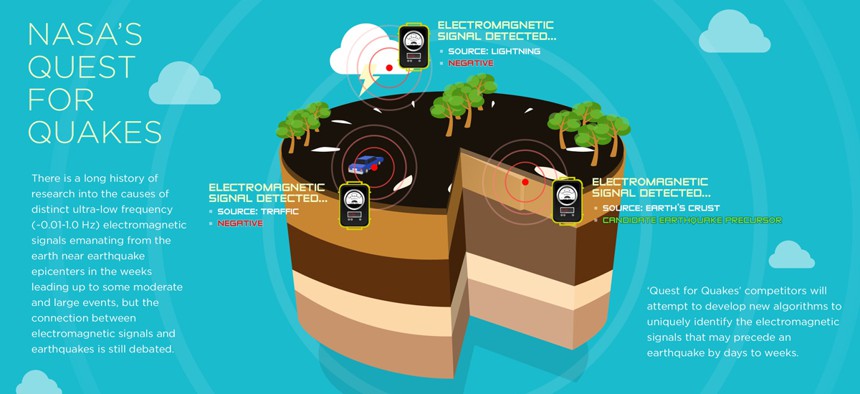NASA Searches for Link Between Electromagnetic Pulses and Earthquakes

topcoder/NASA
Last week, NASA launched a challenge to determine whether there is a connection between electromagnetic signals and earthquakes.
NASA has invited the public to put an end to years of scientific debate by answering a single question: Can electromagnetic pulses forecast earthquakes?
The two-week challenge, called "Quest for Quakes," has asked participants to develop software codes or algorithms able to parse through piles of data and find those electromagnetic pulses that could be associated with earthquakes, according to a NASA statement.
While there are a variety of reasons for these pulses, certain researchers believe some located near an earthquake's epicenter could be caused by the quake and thus can be used to warn of its approach.
If the challenge produces an algorithm that differentiates between the sources of electromagnetic pulses, scientists might be able to provide residents near an earthquake with days or even weeks of warning before it strikes, according to NASA.
“There's been a growing body of experimental data that’s been collected recently, and up until present, very few people have actually examined those data series,” said Craig Dobson, program scientist at NASA, in an interview with Nextgov.
The event began last week.
Each contestant was given three months worth of electromagnetic signal data, which was collected from a handful of sensors located near earthquakes. The data was provided by the research and development group QuakeFinder.
Participants have also been given data taken from instances in which earthquakes did not occur so they have a point of comparison.
Although electromagnetic signals can be caused by lightning, solar storms and trains, they could also be caused by rock fracturing in the Earth’s crust, scientists say.
There are hundreds of people throughout the world participating in the challenge, Dobson said.
Competitors have until Aug. 9 to submit their ideas. NASA will then use a mathematical formula to determine the winner or winners, he said. Those selected will be awarded a $25,000 prize.
The idea for the challenge was first considered two years ago, Dobson said.
“Part of the intent is to expose that data to a larger community and use the power of many minds to help solve a challenging problem,” Dobson said.





